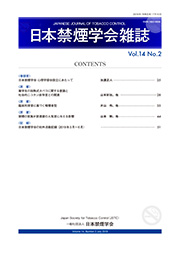Objective: Based on an approach of economics, we estimate whether the non-smoking policy of Japanese pub (
Izakaya) would affect Japanese pub’s performance.
Methods: We construct Japanese pub’s panel data (longitudinal data) from 2012 to 2016 including information on customer’s reviews and Japanese pub characteristics by using a restaurant reviews site. Based on the method of econometric analysis, we statistically estimate the impact of smoking policy on popularity of Japanese pubs.
Results: Implementation of smoking cessation did not statistically and significantly affect the popularity of the Japanese pub, measured by the score of word of mouth rating.
Discussion: The estimation results imply that the smoking environment is not a significant factor for a customer to choose a Japanese pub. It may also imply that even if the non-smoking policy decreases the demand for smokers, it would increase the demand for those who do not smoke.
Conclusion: Even if non-smoking policy is taken at a Japanese pub, customer reviews will not decline, or customers will not shift to competing Japanese pubs where smoking is allowed, and therefore the bar’s sales will not decrease. Hence, to prevent health damage resulting from smoking, it can be justified that government, municipalities and customers request smoking cessation to Japanese pub even from the economic point of view.
View full abstract
